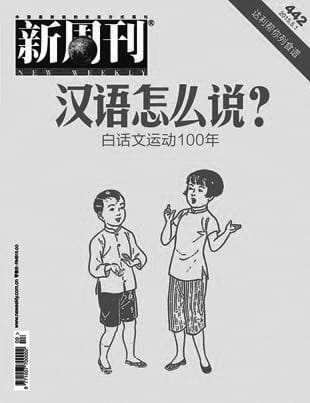- Health Is Wealth
- Posts
- Chinese vernacular Baihua – Chinese food and Chinese culture
Chinese vernacular Baihua – Chinese food and Chinese culture

Chinese vernacular
The baihua (simplified Chinese: 白话文; traditional Chinese: 白話文; pinyin: Baihua Wen; literally “vernacular writing”) or Chinese Vernacular is a style or linguistic register of written Chinese based primarily on spoken Mandarin, and associated with mandarin standard. It should not be confused with baihua different varieties of Chinese spoken today. Since the early 1920s, the baihua writing style is the most widely used in China, succeeding literary Chinese, the ancient custom written expression of the Chinese language since the end of the Han dynasty, succeeding the classic Chinese from the time of Confucius. The term “standard Chinese writing” now refers to baihua (Chinese Vernacular ).
Distinction between written and spoken language [edit | modify the code]
During the time of the Zhou dynasty, China was archaic writing and spoken Chinese language and was used to write the reference texts of that time. From the Qin Dynasty, the Chinese writing began to evolve and diverge from the written language. The gap went deepening with time. Time of Tang and Song dynasties, people began to write differently from the traditional written language, closer to their spoken language; these languages were referred to as bianwen (变 文 / 變 文, bianwen, “altered language”) and yulu (语录 / 語錄, yǔlù “notation language”), and oral language was now consecrated as different Chinese literary standard, which remained in use in the administration and used as an official language and international (including Japan, Korea and Vietnam). The literary Chinese was becoming difficult to access for the Chinese people. During the Ming and Qing dynasties, vernacular languages began to be used in some writings, but not in formal writings remained written in Chinese literary.
Firft written in the vernacular in China
According to Paul Demiéville, Chinese and vulgar vernacular, however, was used in writing since at least the eighth century during the Tang Dynasty, including Buddhist monks, with particular reference to manuscripts discovered in Dunhuang, the Mogao Grottoes in early twentieth century.1. The huaben are a special kind of short stories in the vernacular appeared in the Song Dynasty (960-1279).
Shengtan Jin (1610 – 1661, late Ming Dynasty, early Qing Dynasty), who wrote several new vernacular Chinese, is considered the pioneer of literature baihua style [ref. necessary]. However, it was not until the movement of the May 4th in 1919 and spread through schools and intellectuals such as Hu Shi, the Chinese Lu Xun, the founder of the Chinese Communist Party Chen Duxiu, and Qian Xuantong, the baihua , gained in importance. Literary Chinese lost its prestige, and was therefore considered outdated and a relic of an elitist education from another time, and denigrated by progressives who now city rights in China. The works of Lu Xun and other writers, fiction or other, did much to promote baihua. The vernacular Chinese was now considered the standard by most people. Parallel to the progress of baihua, the Chinese punctuation so far relatively small, developed further under the influence of Western languages as well as Arabic-Indic digits in their variant used in Europe.
Wikipedia writes standard Chinese (baihua / Chinese vernacular).
Since the late 1920s, almost all newspapers, books and official and legal publications in China are written in vernacular Chinese. However, according to the tone or register one wants to give in writing, can be of the style or vocabulary to approach the Chinese literature, as one would do in French using an old vocabulary or quotations Latin. For a hundred years, however, it became common to see messages written in a similar style of Chinese literature. People able to read and especially to express literary Chinese are now few and limited to scholars and specialists in the language or history.
Literary Chinese is still taught in China, Taiwan, Hong Kong and Macao, despite the very different nature of education systems. The success of this education varies greatly places, but it remains popular especially in Taiwan.
See Chinese grammar for the grammar of the Chinese written standard (Chinese vernacular).
Other variants of the vernacular Chinese, including Cantonese, Shanghainese and Minnan (including Taiwanese) (Min Nan), include specific and adapted characters, to write a similar way people speak. Some have even adopted romanisations, cutting once and for all liaison with the Chinese literary. Unlike baihua these written forms have not been formalized and codified, and are used extensively in commercial advertisements and official communications.
Read more about Chinese culture